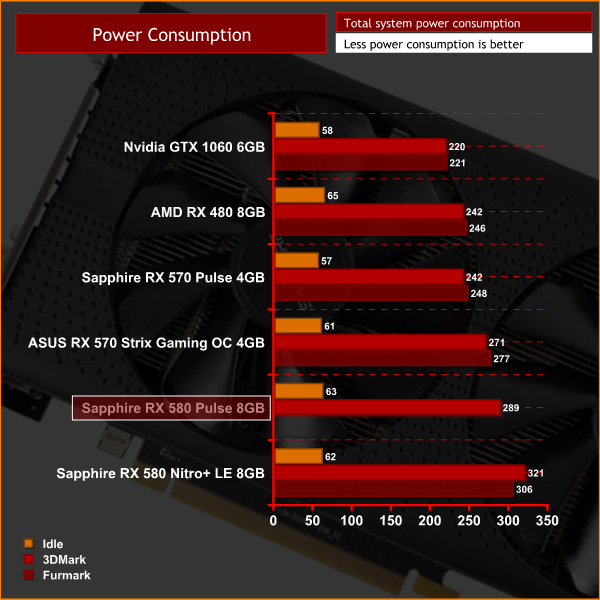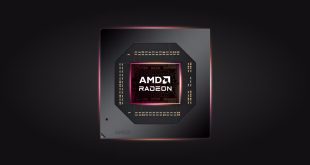Power consumption was measured after 5 minutes of load under three scenario: Furmark, Fire Strike and desktop idle in sequential order with 2 minutes of downtime in between each test. The measurement was taking using a Prodigit 2000MU power meter and measured for the whole system at the power supply, excluding the monitor.
Some cards have no result recorded for the Furmark test, as I found a couple of the cards underclocked themselves to avoid long-term damage, so the power consumption levels were much lower.
While I did not get a result for FurMark, the 289 Watt power draw reading taken while running 3DMark matches the figures I saw while gaming. This is higher than the reference RX 480 8GB, due to the factory overclock, and is considerably more than the GTX 1060.
 KitGuru KitGuru.net – Tech News | Hardware News | Hardware Reviews | IOS | Mobile | Gaming | Graphics Cards
KitGuru KitGuru.net – Tech News | Hardware News | Hardware Reviews | IOS | Mobile | Gaming | Graphics Cards




Good review as always! ;D
Great review thank you. So this card is most likely using up Sapphires remaining 480 chips hence the poor OC the card got or you just got a card that lost the chip lottery. lol
My nitro 480 is rock stable @1415/2050. So probably bad sample or issue is somewhere else.
It’s just the silicon lottery – we can rule out Sapphire re-using a 480 as the 580 is manufacturered with a modified 14nm process so the chips aren’t exactly the same. But it is still the same, overall Polaris architecture.
Yea probably just a bad sample Sapphire is a good company I own 2 TrI-X cards and they have been very solid cards and the Tri-X coolers used on their cards are very well built for sure.
Yep most likely 100% true just the Silicon Lottery and nothing else.
In a nutshell, its about as fast as a overclocked GTX980, pretty decent. Don’t forget folks that RX480/580 actually tends to OC better with lower voltages. The reasoning for not attempting a memory OC is pretty weak though, memory OCing on graphics cards is very easy and not time consuming.
You mention a £239.99 retail price but when I follow your link the card is £449.99 so almost twice this price : any thoughts on that inflation in less than a year ?